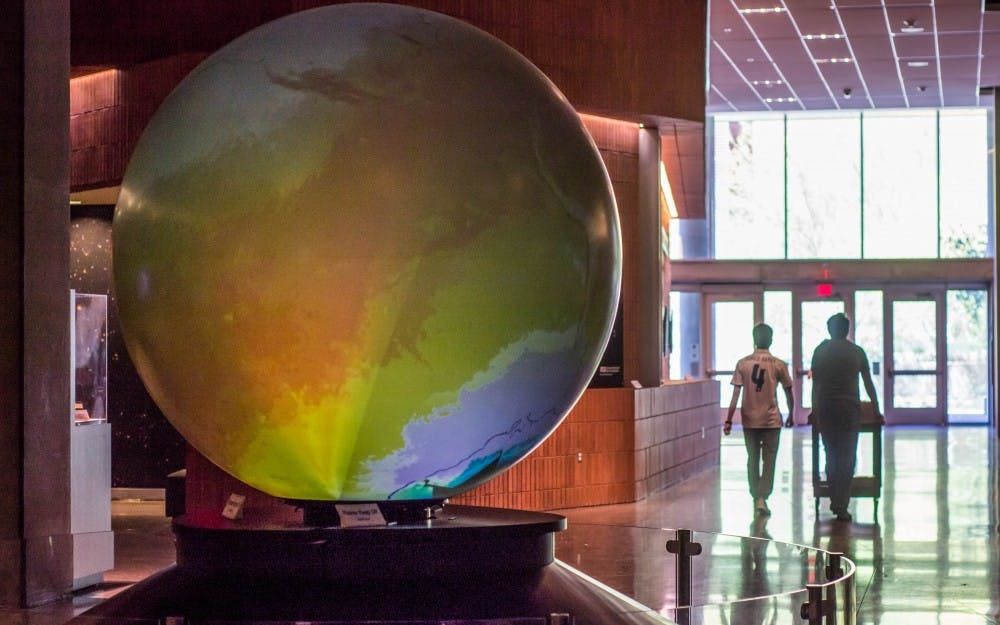ASU scientists, with the help of NASA, created an interactive and visual based learning website to bring better science education to middle and high school students.
The Infiniscope Project was created by the School of Earth and Space Exploration and funded by the NASA Science Mission Directorate, according to the website.
The website has six modules that explain a range of science topics. One lesson uses beats and rhythms to describe the laws governing how distant planets orbit stars. Another lesson gives 360-degree tours of Mars, Australia and Arizona to explain why Mars is red.
The researchers said they hoped to bring a new method of learning science in classrooms.
Joseph Tamer, assistant director of the Center for Education Through eXploration, said they hope to bring a new form of science education to students. He said the best way to teach science is through active learning and exploration.
"The goal is to get high quality, interactive and adaptive science content in the hands of middle school and high school learners," Tamer said.
Tamer said NASA considers the lessons suitable for anyone from ages 9 to 99.
Tamer said the back-end of the website is built to give students feedback on what they're doing in the lessons.
"Our technology allows this digital tutoring, (which is) adaptive feedback through an artificial intelligence – just as if the teacher were looking over their shoulder," Tamer said.
Over a thousand students have used these lessons, Tamer said.
"Students get really enthusiastic and excited about playing a game in class," Tamer said. "It’s something different that they don’t normally do in class or for homework ... it engages their senses in more meaningful ways."
Teachers play an important role in advising the researchers on what works and what doesn't work in the lessons, and the digital learning tools are not intended to replace teachers.
"We run the ideas by them, we run the storyboards by them, they’re our beta testing community," Tamer said. "(The Infiniscope Project) enhances what a teacher can do in class. Instead of lecturing, the teacher can be a facilitator of that knowledge."
Craig Weeks, a high school science teacher at Centennial High School in Peoria, is on the advisory board for the Infiniscope Project. He said he's trying to help students understand science in a different way – without a textbook.
"You’re talking to a guy who is trying to infuse as many things as he can to get kids to look at things in different ways," Weeks said.
Weeks said that they teach students with little science experience.
"With the virtual field trips, the Infiniscope stuff, this is just one of several things I’m going to be using to get them interested and excited," Weeks said.
Weeks said three of his classes worked with the Infiniscope lessons.
Ariel Anbar, a professor at the School of Earth and Space Exploration and director of the Center for Education Through Exploration, the center that heads Infiniscope, said feedback from students and teachers has been positive, except for a few technical issues.
He said they're building modules for basic science concepts, like lunar phases and seasons, that are hard to visualize on paper.
"Many of these things involve complex geometry ... an interactive simulation with 3D in it, and maybe a little VR would really help," Anbar said. "That’s where we’re headed."
Anbar said his goal coincides with ASU President Michael Crow's description of creating a "universal learner."
Anbar said he wants to circumvent the barriers that separate teaching in middle school, high school and college, similar to what Crow has emphasized.
"What technology makes possible is to have those learning experiences or modules or even whole courses flow across those boundaries," Anbar said.
Reach the reporter at cscragg@asu.edu or follow @monsoonchaser on Twitter.
Like State Press on Facebook and follow @statepress on Twitter.




